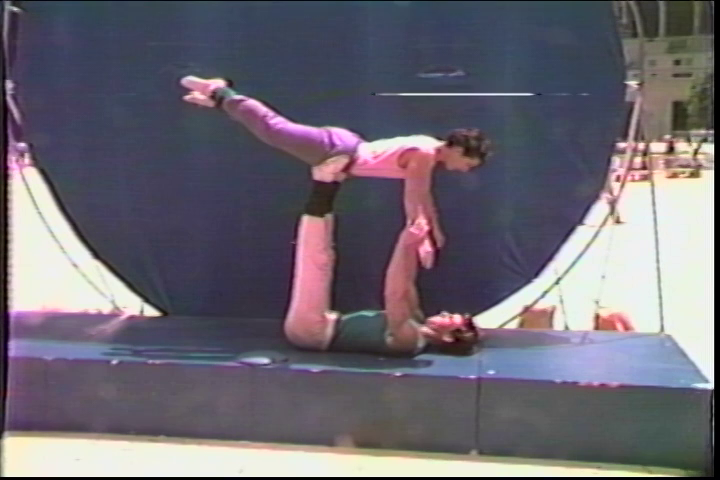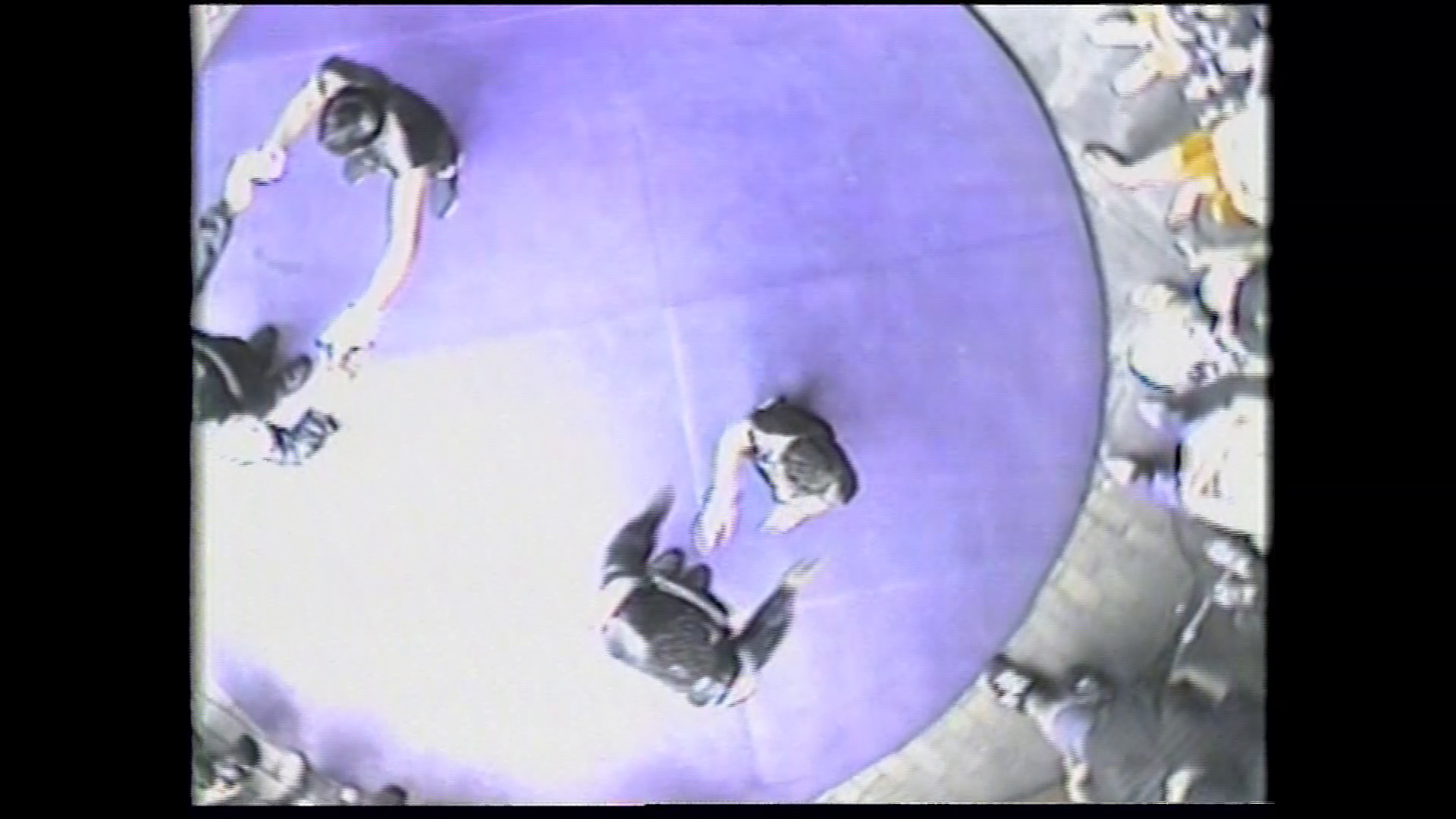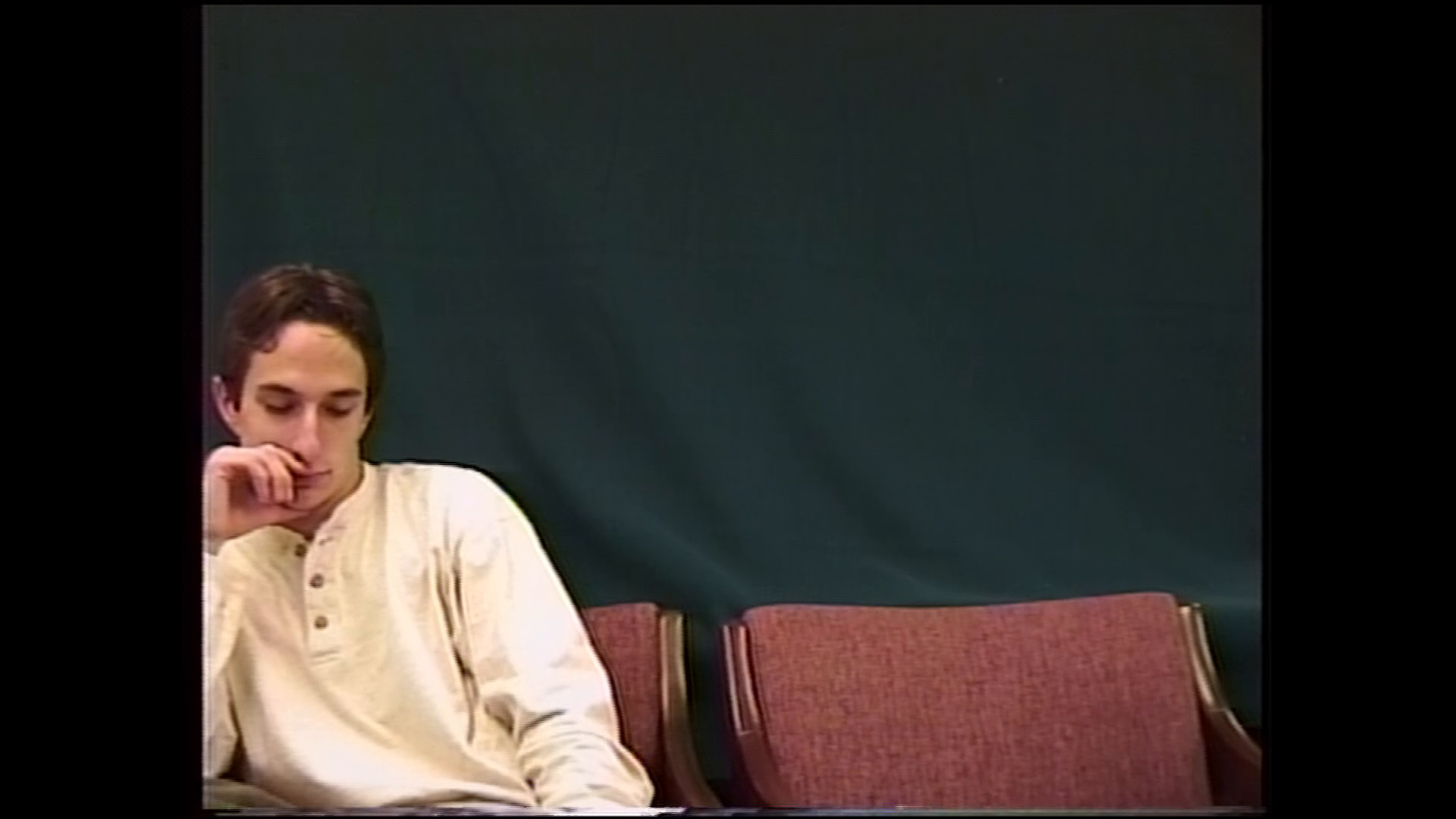Encountering New Media
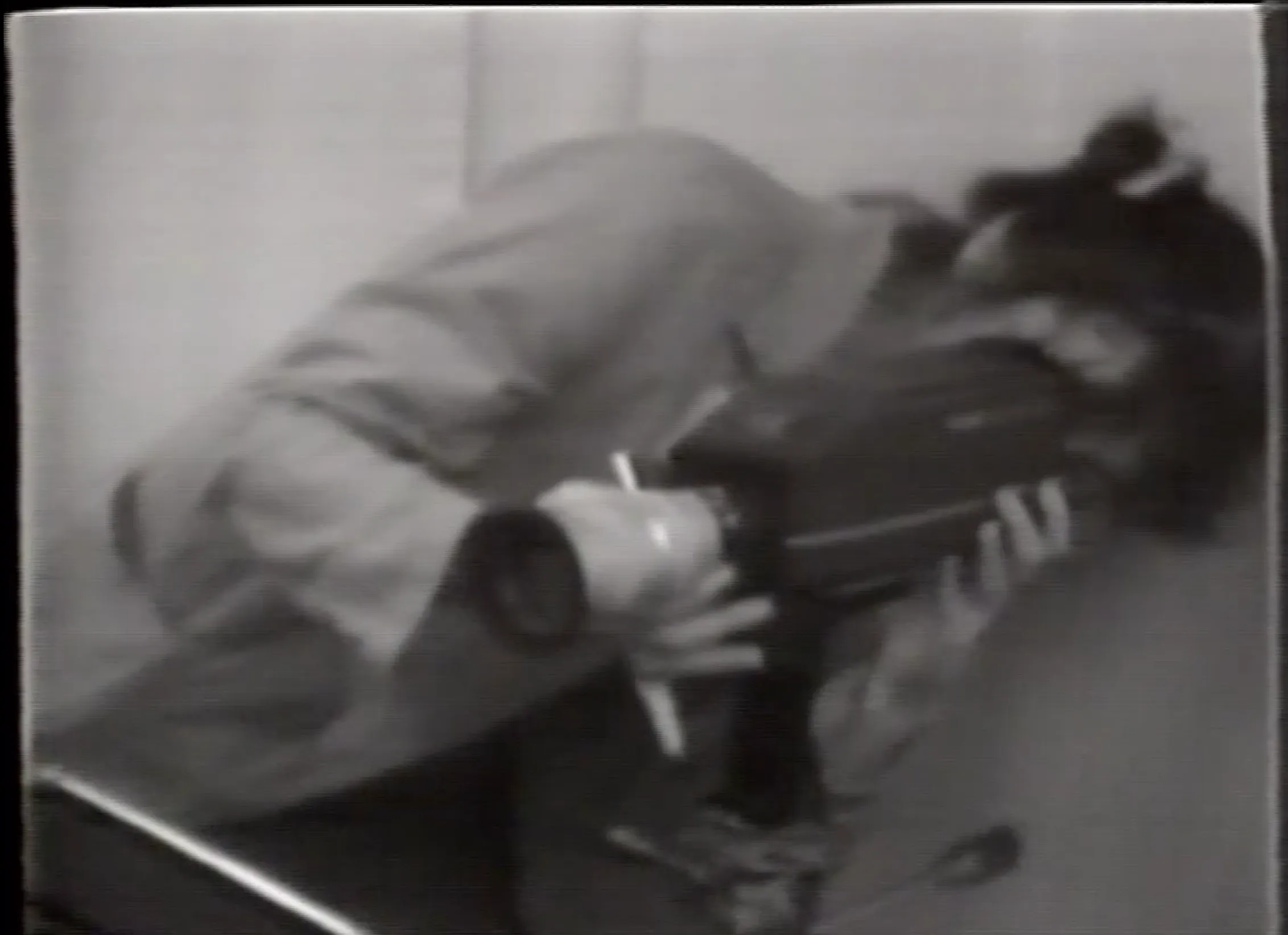
Ben Pettis
“Can everyone see my screen?” “Whoops, you’re muted.” “I think they’re in the waiting room”
These are the sounds of today’s remote video links. In the past several years, phrases like these have become a familiar soundtrack among workplaces, schools, family gatherings, and numerous other social events—all mediated by video technology and the internet. In particular, the COVID-19 pandemic greatly expanded video conferencing and made the practice a common aspect of everyday life. Prior to the global public health emergency, it wasn’t unheard of to have a business meeting via Skype or to chat with friends over FaceTime. Even in the decades leading up to the widespread adoption of smartphones and increased access to high-speed internet, there were countless experiments in video chatting technologies. However, these uses of video technology to connect individuals over vast distances became especially commonplace as a result of the pandemic.
![A crowd of people stand in a large plaza surrounded by tall buildings. In the middle of this group, a woman holds a microphone and speaks to surrounding people.]](/_astro/wendyWTC.BE5CEAwg_ZloUs7.webp)
Wendy Clarke introduces “The Link” video sculpture to a crowd of onlookers at the World Trade Center in 1984
Video chatting technologies are normalized now, but it is important to keep in mind that they were once very new. (All media were once new, à la Lisa Gitelman). One of the unexpected side-values of the Wendy Clarke collection is that it is an incredibly thorough collection of how people reacted to seeing themselves on video for the first time. Throughout hundreds of individual tapes, countless individuals sat in “Love Tape” booths, participated in public “video sculpture” installations, exchanged short video messages with strangers, and more. And for many participants, the experience of sharing their perspectives, hopes, dreams, and desires coincided with their initial encounters with new media and communication technologies.
These encounters with new media enable researchers to explore an important question: What is the relationship between technology and the self? The answers to this question are not immovable constants that are set in stone. The participants recorded in Clarke’s collection show that this relationship is something that is continually negotiated, interpreted, and experimented with. The depth and breadth of the collection is highly valuable – so many voices and perspectives are included, and not just in the direct address aspects but also the mundane depictions of everyday life and ordinary individuals sharing their experiences.
"But normally it's just a way for people to interact and communicate over a distance, sort of like the next step past the telephone."
- Wendy Clarke
“The Link” is one of Clarke’s projects that has the clearest parallels to modern video conferencing. For this “video sculpture,” Clarke set up large colored backdrops at different locations across Manhattan—one at the World Trade Center and another in Harlem. A camera was pointed at each backdrop and connected to the other location with microwave transceivers. This enabled a video monitor at each location to display a composite image of both video feeds. In Clarke’s, this technical setup could enable new forms of interactivity. In a tape recorded at the World Trade Center Plaza, she explained to the gathered crowd, “So if you look at the monitor, you can see superimposed images so that people can interact with each other.”
The video feed from the WTC location was superimposed with the video feed from the Harlem location to create this composite image that was displayed on monitors.
Click here to view full tape.
Throughout “The Link” tapes, people can be seen encountering the installation and idly watching from a distance. At some moments, there are specific choreographed performances such as dance routines taking place at the WTC and Harlem locations. During these performances, much of the crowd in the background can be see watching the live performance taking place directly in front of them. Most of the crowd appears to focus their attention on the dancers at the WTC plaza, though every few minutes a person can be seen shifting their stance to watch the video monitors, which would be showing the composite video with the Harlem performers. In this sense, The Link collapses distance between locations while simultaneously highlighting the significance of location specificity. The project is not a full departure from the “real world” into “cyberspace” or some other imagined virtual environment. Instead, this arrangement of media and technology highlights the people being connected, rather than merely emphasizing the overlapping of physically distinct locations. At one point, Clarke can be heard explaining the project to bystanders, comparing this setup to earlier forms of communication: “But normally it’s just a way for people to interact and communicate over a distance, sort of like the next step past the telephone.”
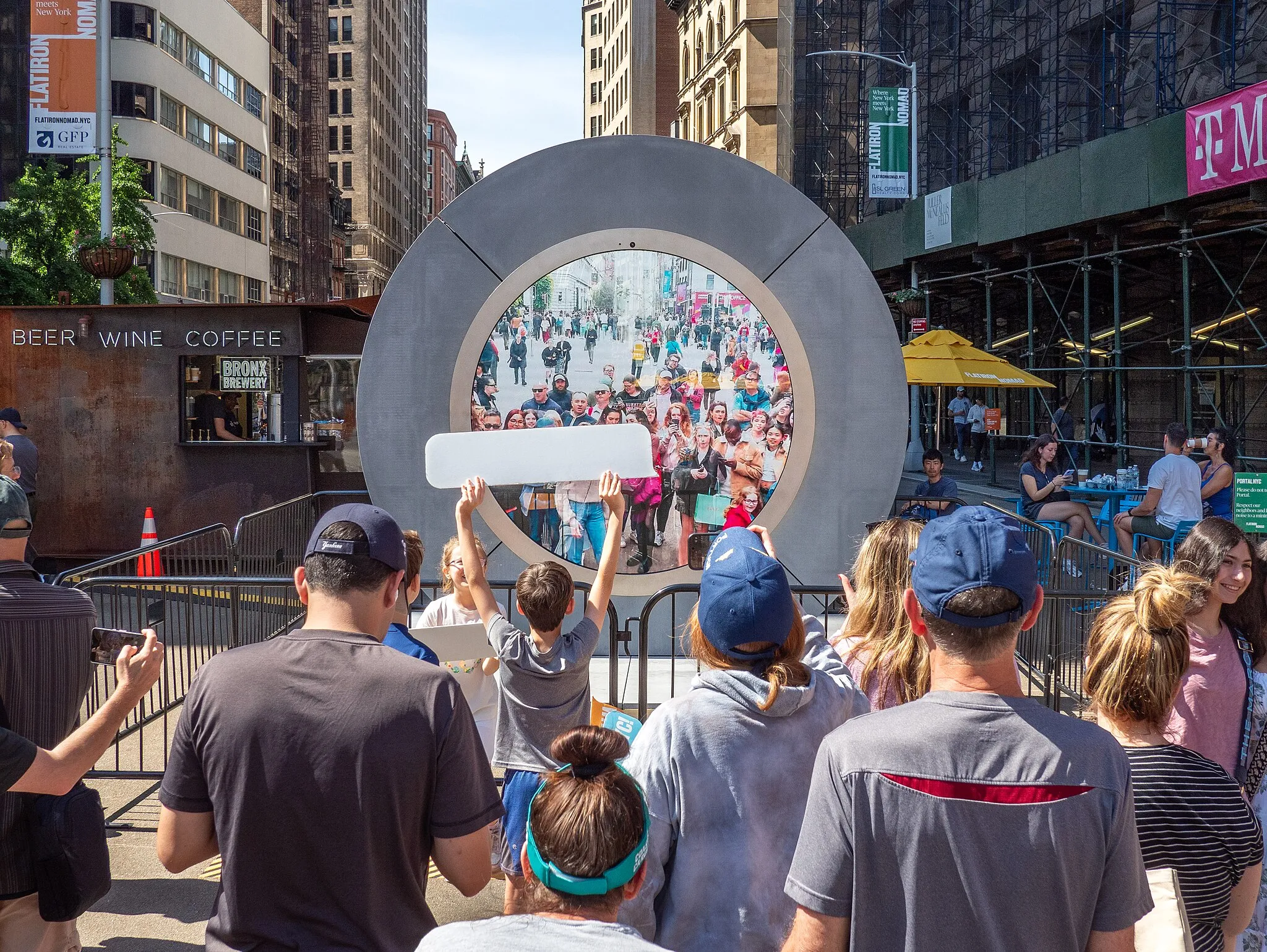
The “Portal” installed in New York City provided a video link to a Portal located in Dublin, allowing people to interact with one another across the Atlantic ocean. Photo by Rhododendrites, used under a Creative Commons Attribution-Share Alike 4.0 International License
In the 2020s, remote video technology is much more familiar and integrated into daily life. The ubiquity of the technology is why recent projects, like Portals, can simply be installed in a location and most people will know what’s going on without introduction or explanation. By contrast, the setup for The Link required Clarke and her team to be on site, managing equipment, interacting with spectators, and perhaps most importantly – providing explanations of what was going on. This technology was well-known and widely used for television broadcast and other professional purposes. However, it was still not wholly accessible to the general public, and required specialized experts to contextualize the project.
New media technologies are often pitched to consumers as “revolutions” or “enormous paradigm shifts.” Think of the development of the printing press, the invention of sound cinema, or even the most recent hype surrounding generative AI. Each of these technologies was once new, and anticipated by some to completely revolutionize everyday life. But this outcome is never inevitable. Media technology, and individual people’s relationships to it, are continually developing and being renegotiated. In her work, Wendy Clarke recognized what matters the most: individual people and their lived experiences. For her, media was a way to highlight these perspectives. The videos from throughout the Wendy Clarke collection serve as a powerful archive of how people from many walks of life encountered what was—at the time—a relatively new media technology.
Ben Pettis is a Ph.D Candidate in Media and Cultural Studies at the University of Wisconsin-Madison. His work in platform studies and critical internet studies examines how the corporate power of large online platforms operates within the daily lives of individual users.
